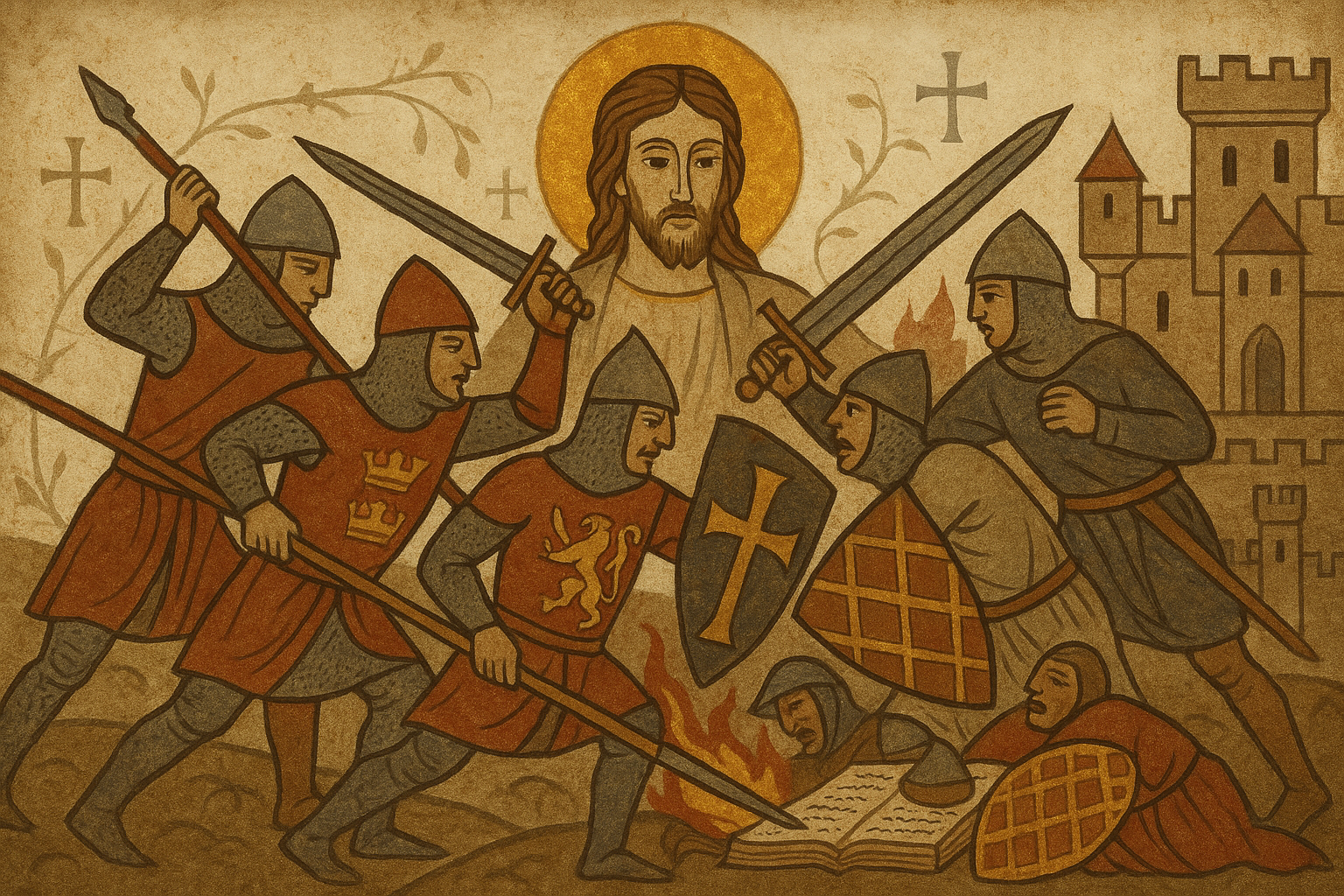
Historical fiction, at its most honest, does not flatter the past. It does not romanticize disease, sanitize medieval warfare, or place modern sensibilities into the mouths of long-dead kings. It stands amid ruins, sifting ash and memory, and listens without presumption.
But realism alone is not enough. Any genre can catalogue corpses or trace the genealogy of monarchs. What distinguishes sacred realism is that it refuses to look away from suffering and refuses to let that suffering be meaningless. It binds the physical and the metaphysical, reminding us what Christian theology has always taught: that truth is incarnate. That grace bleeds.
Sacred realism enters history the way Christ entered time—bodily, vulnerably, scandalously. It does not separate the liturgical from the brutal. The Mass echoes in famine. A battlefield becomes a catacomb. A starving mother clutching her child becomes a Marian icon, even if no hagiography records her name.
This approach treats historical fiction not as escape, but as anamnesis—a memory that makes the past present. My fiction is cruciform in structure and sacramental in tone. I’m not interested in heroes who model twenty-first century ethics. I write to expose the reader to the tension of the Incarnation. Saints who doubted. Priests who sinned. Monarchs who prayed with blood on their hands—not to excuse, but to reveal that redemption is never sterile. It is born in dirt, doubt, and silence.
Sacred realism does not require visible miracles. Often God is hidden, silent, or misidentified. Often the divine emerges through weakness—a whispered confession, a broken relic, a body buried without rites. But even silence can be sacramental. Even ruin can carry grace. The goal is not didactic theology, but incarnational storytelling. The world is never merely material. And neither is the past.
Today, it is fashionable to treat history as either indictment or nostalgia. I reject both. Sacred realism is neither political nor escapist. It is liturgical. Every chapter is an invocation. Every character, a psalm of flesh and failure. Every setting, an altar of memory and consequence. The goal is not merely to entertain, but to bear witness.
In the end, sacred realism asks one final question:
If this world was once filled with saints and devils, sacraments and secrets—what makes you think yours isn’t?